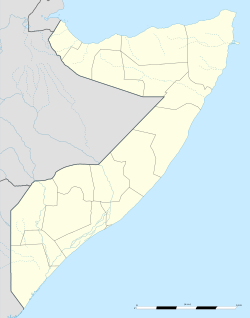History
Adale was mentioned in the Periplus of the Erythraean Sea, written by an anonymous writer who lived in the first century AD when Egypt was occupied by the Romans. Adale then appeared in the reports of Ibn Batuta and other explorers from Andulus. When the trade between East Africa, Arabia, and India boomed in the 1700s-1800s, Adale bordered the 10-mile strip of the Benadir Coast in which Zanzibar’s Omani rulers claimed. With exception to 5 nautical miles of Warsheikh, the rest of the strip included Mogadishu, Marka, Baraawe, and Kismayo – all the way to Zanzibar. The later ruins of Filonardi's fort can also be found in the Adale. [1]
During the pre-independence period in Italian Somaliland, the city was chosen by Vincenzo Filonardi as the headquarters of his newly created "Somalia Italiana". There was fierce anti-colonial resistance to this in Adale and around the surrounding areas that left 40 Abgaal men and 7 Italian men dead commemorated by a monument in Adale. [2]
On 3 October 2014 the town was liberated from the jihadist group Al-Shabaab by the Somalia National Army and AMISOM forces. Al-Shabaab had occupied the town for several years. According to AMISOM-sources Al-Shabaab did not mount any resistance because they had lost support from the public in Adale. [3]
This page is based on this
Wikipedia article Text is available under the
CC BY-SA 4.0 license; additional terms may apply.
Images, videos and audio are available under their respective licenses.
